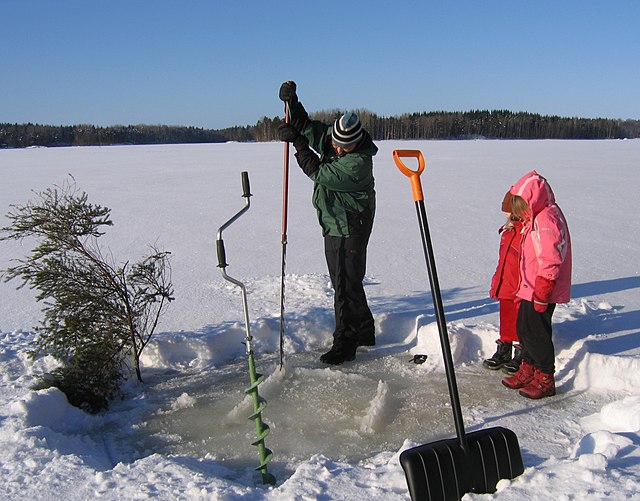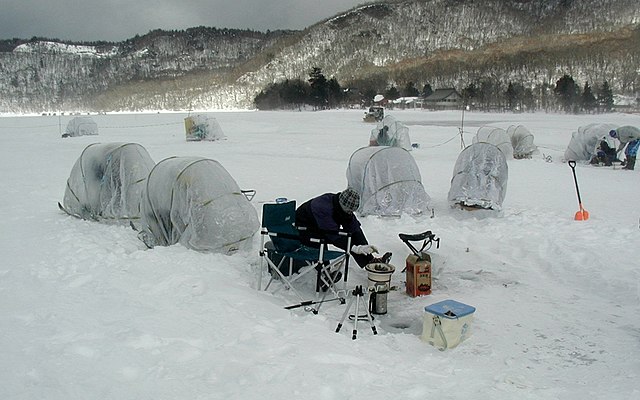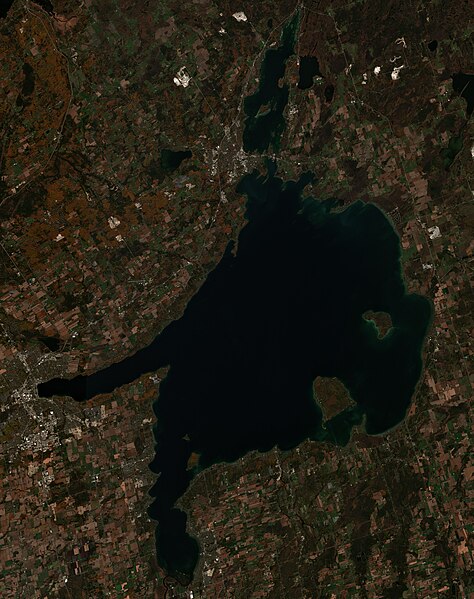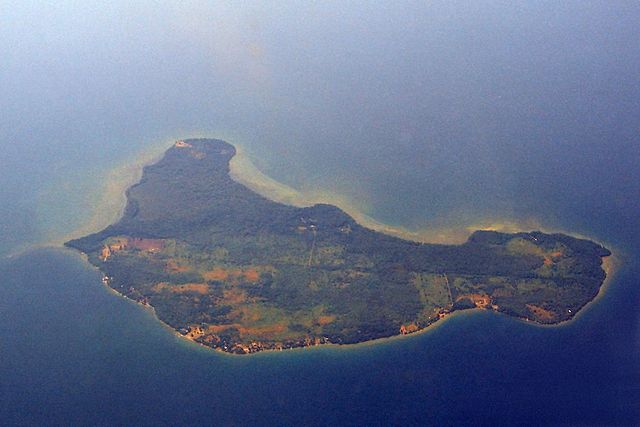Ice fishing is the practice of catching fish with lines and fish hooks or spears through an opening in the ice on a frozen body of water. Ice fishers may fish in the open or in heated enclosures, some with bunks and amenities.
An ice fisher cuts a hole into the ice with an ice saw. An ice auger and snow shovel are visible in the foreground.
Ice shanties, Saguenay River, Saint-Fulgence, Quebec, Canada
Snail-shaped shelters, Lake Ōnuma, Japan
Sainte-Anne River, Quebec, Canada, 1964
Lake Simcoe is a lake in southern Ontario, Canada, the fourth-largest lake wholly in the province, after Lake Nipigon, Lac Seul, and Lake Nipissing. At the time of the first European contact in the 17th century, the lake was called Ouentironk by the native Wendat/Ouendat (Huron) people. It was also known as Lake Taronto until it was renamed by John Graves Simcoe, the first Lieutenant-Governor of Upper Canada, in memory of his father, Captain John Simcoe of the Royal Navy. In Anishinaabemowin, the historical language of the First Nations living around this lake, namely Anishinaabek of Rama and Georgina Island First Nations, the lake is called Zhooniyaang-zaaga'igan, meaning "Silver Lake".
Satellite view of Lake Simcoe and Lake Couchiching directly north of it
Downtown Barrie and Kempenfelt Bay, the western arm of Lake Simcoe
Aerial view of Thorah Island, 2012. The island is one of several contained in Lake Simcoe.
The mouth of the Black River at the southern shoreline of Lake Simcoe.








